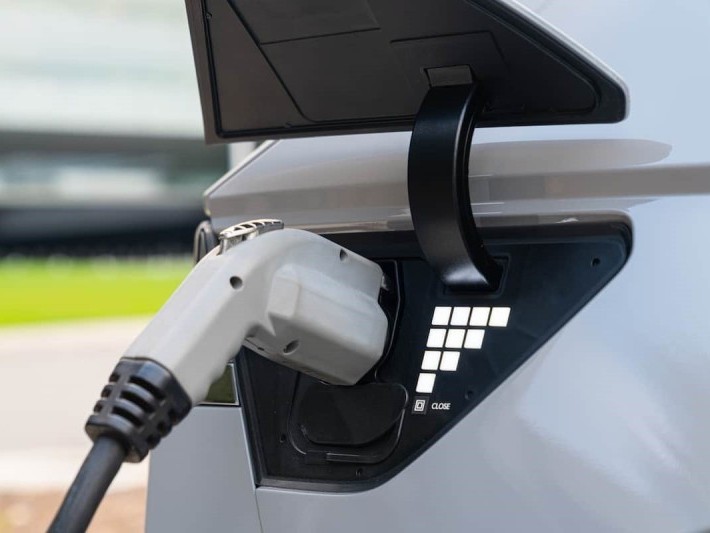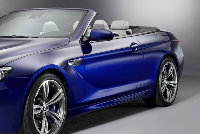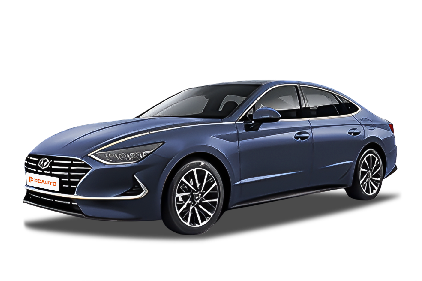Q
What's the engine displacement of Sonata?
Various models of Sonata have different engine displacements. For example, the 2020 Hyundai Sonata 2.5 Premium has a displacement of 2497cc. Its engine can deliver ample power, meeting the needs of drivers who have certain requirements for power. The 2017 Hyundai Sonata 2.0 Elegance and Hyundai Sonata 2.0 Executive both have a displacement of 1999cc, which are suitable for consumers who pursue a smooth driving experience. Engines with different displacements will vary in terms of power performance, fuel consumption and so on. Consumers can choose the model that suits them according to factors such as their own driving habits and daily travel needs.
Special Disclaimer: This content is published by users and does not represent the views or position of PCauto.
Related Q&A
Q
When to change transmission fluid 2020 Hyundai Sonata?
For the 2020 Hyundai Sonata's transmission fluid change interval, stick to the official maintenance manual's recommendation: every 60,000 to 80,000 km or 4-5 years, whichever comes first. Adjust based on driving conditions—if you’re often stuck in traffic or do frequent short trips, consider shortening it to 40,000-50,000 km to protect the transmission.
The Sonata’s automatic transmission is picky about fluid cleanliness, so always use the specified SP-IV or equivalent fluid for peak performance. If you notice rough shifts, delays, or weird noises, get the fluid checked ASAP.
Remember, this fluid isn’t just for lubrication—it handles hydraulic pressure and cooling too. Skipping changes can lead to oxidation, debris buildup, and even damage to sensitive parts like the valve body. That’s why regular maintenance is a must.
Pro tip: Swap the filter (if equipped) and opt for a flush with specialized equipment to ensure a thorough job. Since transmission specs can vary by model year, double-check with a Hyundai service center before buying parts.
Q
What is the factory warranty on a 2020 Hyundai Sonata?
The 2020 Hyundai Sonata typically comes with a factory warranty of 5 years or 100,000 kilometers (whichever comes first), covering manufacturing defects and material flaws. The powertrain may even have extended coverage—though it's always best to check with your local dealer for the latest terms.
Honestly, Hyundai’s warranty is one of the more competitive in the industry, especially compared to Japanese rivals. The longer coverage shows the brand’s confidence in its build quality and helps owners save on maintenance down the road. Plus, they throw in 24/7 roadside assistance, which is a lifesaver in emergencies.
Just keep in mind: normal wear-and-tear items like tires and brake pads aren’t covered. And to keep the warranty valid, you’ll need to stick to the service schedule at authorized centers. My advice? Read the warranty booklet carefully when you buy the car and hold onto all service records—it’ll save you headaches later.
Q
Are there any recalls on a 2020 Hyundai Sonata?
Regarding the recall information of the 2020 Hyundai Sonata, this model has been recalled multiple times worldwide due to potential safety hazards, including fuel pump module failure that may cause engine stalling during driving, welding defects in seat belt pre tensioners that affect protection effectiveness, and software logic errors in the intelligent cruise control system that may cause unexpected acceleration. Car owners can check the specific recall status on the brand's official website by entering the vehicle identification number (VIN). It is worth noting that modern cars usually notify affected car owners through registered mail or text messages. It is recommended to regularly check if contact information is updated to ensure timely receipt of notifications. For second-hand car buyers, they can confirm whether the recall project has been completed by checking the vehicle maintenance records. Unfinished recall services can be handled free of charge at authorized service centers. If any malfunction lights or abnormal situations are found on the dashboard during daily driving, it is necessary to contact after-sales inspection as soon as possible. This proactive recall mechanism reflects the manufacturer's emphasis on safety responsibility and is also a common quality improvement method in the automotive industry.
Q
What is the transmission problem on a 2020 Hyundai Sonata?
The 2020 Hyundai Sonata's transmission issues primarily involve its 7-speed dual-clutch transmission (DCT). Some owners report occasional jerky or delayed shifts during low-speed driving, which typically relates to either the transmission control module (TCM) software calibration or clutch break-in period. Hyundai has released technical updates for certain vehicles to improve shift smoothness.
It's worth noting that DCTs often exhibit these behaviors in stop-and-go traffic—this isn't unique to the Sonata. Many brands' dual-clutch systems require an adaptation phase early on. However, if you encounter severe symptoms like grinding noises or failure to engage gears, visit a dealership immediately, as these may indicate hydraulic or sensor failures.
Regular maintenance is key: always use the specified transmission fluid, especially in hot climates where heat can accelerate fluid breakdown. For used-car shoppers, get a professional inspection to check transmission health and verify any open recalls. Hyundai's been relatively flexible with transmission warranties lately—some out-of-coverage cases have even received goodwill repairs.
Q
What is the safety rating of the 2020 Sonata?
The 2020 Hyundai Sonata delivers outstanding safety performance, earning the "Top Safety Pick+" rating from the IIHS (Insurance Institute for Highway Safety) and a five-star overall safety score in NHTSA (National Highway Traffic Safety Administration) tests. Its standard Hyundai SmartSense suite includes forward collision warning, automatic emergency braking, lane keeping assist, and adaptive cruise control. Higher trims add advanced features like blind-spot monitoring and rear cross-traffic alert.
What’s worth mentioning is its high-strength steel body structure, which significantly improves crash protection. If safety is a top priority for you, it’s helpful to look into the testing standards of IIHS and NHTSA—they focus on different crash scenarios. For example, IIHS’s passenger-side small overlap front test is particularly rigorous.
With advancing technology, many new cars now come with even more advanced safety systems, like pedestrian and cyclist detection, which could also be a factor in your decision-making.
Q
Is there a recall on the 2020 Hyundai Sonata?
Regarding the recall information of the 2020 Hyundai Sonata, this model has indeed issued recall notices in multiple markets worldwide due to potential safety issues, including electric parking brake system modules that may experience short circuits, the risk of stalling during driving due to fuel pump failures, and the possibility of damage to connecting rod bearings due to insufficient rust prevention technology in some vehicles. It is recommended that car owners check the specific recall status on the brand's official website or authorized service center through the vehicle identification number. Modern cars usually notify affected car owners through registered mail or text messages, and provide free maintenance services. Even if they do not receive notification, they can actively schedule a test. For second-hand car buyers, they can check whether the relevant recall and repair have been completed through the repair records. It is worth noting that regular attention to recall information is an important part of vehicle maintenance, and hidden dangers such as electronic or fuel systems occasionally occur in other brand models. Keeping an eye on manufacturer announcements can effectively improve driving safety. The simplest way to confirm whether your car is within the recall scope is to bring the car key to a nearby dealer for quick inquiry.while avoiding robotic phrasing.)
Q
What is the fuel consumption of Hyundai Sonata 2020?
The 2020 Hyundai Sonata's fuel efficiency varies depending on engine configuration and driving conditions. The 2.5L naturally aspirated four-cylinder engine delivers a combined fuel consumption of approximately 7.8–8.1L/100km, while the more economical 1.6L turbocharged version averages around 6.7–7.2L/100km. Real-world figures may differ based on road conditions, driving habits, and maintenance status.
Featuring Hyundai's Smartstream technology, the Sonata optimizes combustion efficiency and reduces friction to improve fuel economy. It also offers selectable drive modes, with Eco mode further enhancing efficiency. For more accurate estimates, check owner forums or test-drive the vehicle yourself.
While hybrid models typically offer better mileage, the 2020 Sonata didn't introduce a hybrid variant in this market. To maximize efficiency, maintain smooth acceleration, proper tire pressure, and regular servicing—including air filter and spark plug replacements—to keep fuel consumption in check.
Q
Does a 2020 Hyundai Sonata have a turbo?
The 2020 Hyundai Sonata does offer a turbocharged engine option – a 1.6-liter turbocharged four-cylinder that delivers 180 horsepower and 265 Nm of torque, paired with an 8-speed automatic transmission. This powertrain strikes a nice balance between fuel efficiency and driving excitement, making it a solid choice for performance-minded buyers.
For those who prefer something different, there's also a 2.5-liter naturally aspirated engine available. Hyundai's engine tech is well-refined, and the turbocharging here does a great job of boosting power output from the smaller displacement while keeping fuel consumption in check—whether you're navigating city streets or cruising on the highway.
Just remember, turbo engines need a bit more attention when it comes to maintenance, especially oil changes and cooling system care, to ensure they stay reliable in the long run. As a midsize sedan, the Sonata delivers a comfortable ride and decent handling, working well for both family trips and daily commutes.
Q
What are common problems with the 2020 Sonata?
The 2020 Sonata delivers solid overall reliability, but there are a few common issues worth noting. Some owners report premature 12V battery drain—particularly with frequent use of the smart key's remote start feature. We'd recommend periodic battery health checks to avoid being stranded.
Another watch-out is the sunroof; a handful of drivers experienced rattles or clogged drainage channels after prolonged use, especially in rainy regions. Regular cleaning of the tracks and drainage holes helps prevent this.
While the smart cruise control works well in most scenarios, it can occasionally misread complex road situations, so staying alert is still crucial. Maintenance-wise, parts availability is good, and service costs are mid-pack for the segment.
Hyundai's made noticeable NVH improvements—the 2020 Sonata's cabin is significantly quieter than its predecessor. That said, some owners note pronounced tire noise at highway speeds; swapping to premium tires could help.
Bottom line: Stick to the scheduled maintenance, and this sedan should treat you right.
Q
What generation is the 2020 Hyundai Sonata?
The 2020 Hyundai Sonata represents the eighth generation of this model, which first debuted in 2019. It adopts Hyundai's latest "Sensuous Sportiness" design language, featuring a more dynamic and stylish look—think the signature full-width LED daytime running lights and a sleek fastback silhouette.
Built on Hyundai's all-new third-generation platform, the eighth-gen Sonata boasts improved body rigidity while shedding weight, enhancing both handling and safety. Under the hood, buyers can choose from multiple engine options depending on the market, including a 2.0L naturally aspirated, a 1.6L turbocharged, and a 2.5L naturally aspirated unit, with some variants even offering a hybrid powertrain.
Inside, the cabin gets a cleaner, more tech-forward design with a fully digital instrument cluster and a large touchscreen infotainment system supporting Apple CarPlay and Android Auto. This generation also introduces advanced driver-assistance features like Highway Driving Assist and Remote Smart Parking Assist.
Space is another area where the Sonata improves, thanks to a longer wheelbase that liberates extra rear legroom. The trunk offers 462 liters of cargo space, making it a practical choice. As Hyundai's flagship midsize sedan, the Sonata has always been praised for its value and well-rounded performance—and with its design and tech upgrades, the eighth-gen model only sharpens its competitive edge.
Popular Cars
Model Year
Car Compare
Car Photo
Latest Q&A
Q
Why is gasoline a fuel?
Gasoline can serve as a fuel because it possesses core properties suitable for providing power and the ability to convert energy. It is a hydrocarbon mixture obtained through fractional distillation and cracking of petroleum, mainly containing C5-C12 aliphatic hydrocarbons, naphthenes, and a small amount of aromatic hydrocarbons. It is characterized by volatility and flammability, with low viscosity facilitating smooth flow in injection systems, and rapid evaporation enabling quick formation of a uniform combustible mixture with air. Gasoline stores chemical energy; when ignited by a spark plug in the engine combustion chamber, it burns rapidly to release a large amount of thermal energy, which pushes the piston to move and converts into mechanical energy, providing power for vehicles such as cars and motorcycles. In addition, the anti-knock property of gasoline (measured by octane number) can adapt to engines with different compression ratios, ensuring stable operation and performance; it has a high energy density, storing more energy per unit volume, good combustion efficiency, and high availability of gas stations for convenient use. Therefore, it has become the main fuel for spark-ignition internal combustion engines and is widely used in transportation and related fields.
Q
What are 1st, 2nd, and 3rd family gases?
The first, second, and third family cars are vehicle categories classified based on the stages of family car-purchasing needs. The first family car is an entry-level economical model, such as the Perodua Axia and Proton Saga, priced at approximately 30,000 to 50,000 Malaysian ringgit. It emphasizes fuel efficiency and practicality, making it suitable for young families purchasing a car for the first time. The second family car falls into the mid-range category, offering more space and enhanced features, such as the Proton Persona and Toyota Vios, priced between 60,000 and 100,000 Malaysian ringgit, catering to the comfort requirements of growing families. The third family car is a premium model or an MPV/SUV, such as the Proton Exora and Honda CR-V, priced above 100,000 Malaysian ringgit. It boasts spacious interiors and upscale configurations, ideal for larger families or long-distance travel. Malaysian consumers typically prioritize fuel efficiency, maintenance costs, and space when selecting a vehicle. Families at different life stages adjust their car choices accordingly. For instance, small families may begin with the first category, upgrade to the second after having children, and larger families often opt for the third category.
Q
What are the four types of natural gas?
Natural gas can be classified into four main types based on its source: gas field gas (pure natural gas), associated petroleum gas, condensate field gas, and coalbed methane. Gas field gas is directly extracted from gas wells, typically containing over 90% methane with minimal impurities. Associated petroleum gas is a byproduct of oil extraction, containing not only methane but also significant amounts of other hydrocarbons such as ethane and propane. Condensate field gas yields light hydrocarbon fractions during extraction, characterized by a high methane content and small quantities of heavier hydrocarbons like pentane. Coalbed methane is extracted from underground coal seams, primarily consisting of methane and nitrogen, and must have a methane content exceeding 40% to be utilized as fuel. Due to compositional differences, these natural gas types vary in calorific value and applications. The first three are commonly used for urban gas supply, whereas coalbed methane requires purification before effective utilization. As a clean and efficient energy source, the development and utilization of these diverse natural gas types play a crucial role in optimizing energy structure.
Q
What are the three types of fuel gas?
Common fuel gases are mainly divided into three types: natural gas, liquefied petroleum gas (LPG), and manufactured gas. Natural gas is a flammable gas existing in nature, with methane as its main component. It is colorless and odorless, leaves no residue after combustion, and has high thermal efficiency, making it a clean energy source. Liquefied petroleum gas is a by-product of the petroleum refining process, whose main components include propane and butane. It is a gas at room temperature but can be converted into liquid through pressurization and cooling, facilitating storage and transportation. Manufactured gas is generated through thermochemical reactions of fossil fuels such as coal or petroleum under specific conditions, with main components including hydrogen, carbon monoxide, and methane. It has low production costs but produces certain pollution after combustion, so ventilation should be ensured during use. These three fuel gases have different application scenarios in the energy supply field, and their calorific values and usage characteristics also vary. For example, the calorific value of natural gas is approximately 33,000-36,000 kcal per cubic meter, that of LPG is about 90,000 kcal per kilogram, and that of manufactured gas is roughly 3,500-4,200 kcal per cubic meter. The different calorific values make them suitable for different energy demand scenarios such as households and industries.
Q
Is unleaded petrol a gas?
Unleaded gasoline is not a gas but a liquid fuel. It refers to gasoline with a lead content of less than 0.013 grams per liter and without the addition of tetraethyl lead as an anti-knock additive during the refining process. Its octane rating is typically 95, slightly lower than the 97 of leaded gasoline. The use of unleaded gasoline can effectively reduce emissions of harmful substances such as hydrocarbons, carbon monoxide, and nitrogen oxides in vehicle exhaust, thereby lowering pollution risks including smog, toxic gases, and acid rain. However, it should be noted that while unleaded gasoline contains no artificially added lead, it still retains trace amounts of lead from crude oil. Additionally, its combustion releases gases, particulate matter, and condensates, with particles smaller than 2 microns in diameter being particularly prone to prolonged suspension in the air and subsequent human inhalation. Thus, potential health impacts remain a concern. Currently, most vehicles can use unleaded gasoline directly, though certain models require selecting the appropriate octane grade as recommended by the manufacturer to ensure optimal engine performance and longevity.
View MoreRelated News

2026 Toyota HiLux receives five-star ANCAP safety rating in ANCAP
MichaelDec 12, 2025

In Malaysia, which sliding door MPVs are available?
MichaelOct 30, 2025

Modern Ioniq 5 N Lands in Malaysia: Track-Level Performance Electric Vehicle is Here, Priced Possibly Below RM 400,000?
JohnSep 10, 2025

Hyundai's Big Return to Malaysia: Top 5 Models Expected
MichaelMay 30, 2025

580,000 km & 87.7% Battery Health: Ioniq 5’s Incredible Durability
MichaelMay 6, 2025
View More


















Pros
Cons